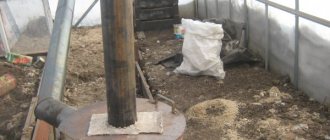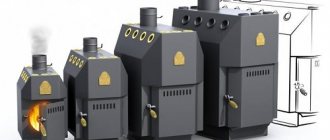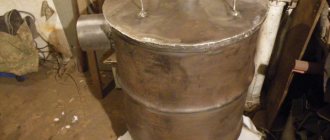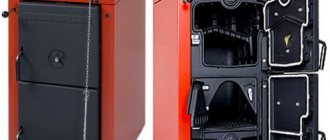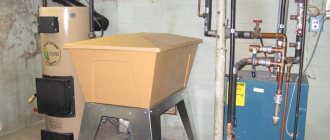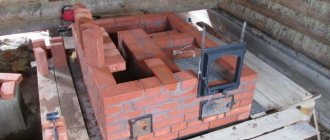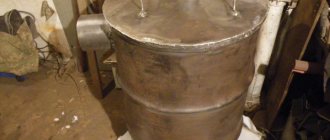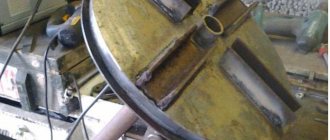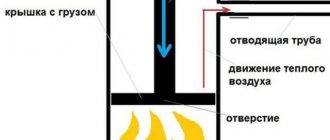Any living space needs to be heated. Everyone understands this, but not every owner of a summer cottage is able to provide a small house with sufficient heat during the cold season. To solve this pressing problem for many summer residents, you just need to stock up on firewood and purchase a long-burning stove. Thanks to its unique design, the device maintains the required temperature in the house without special energy costs. In addition, most models have a hob on which you can cook or heat food. This is also one of the methods to save electricity or gas.
Long-burning wood stoves: prices, where to buy inexpensively
The price range of such heating equipment has a wide range.
Selecting and ordering through online suppliers will be the easiest solution. For this purpose, many convenient catalogs have been created, where all the technical characteristics of the unit are indicated; in the photo you can see the nuances of the appearance and find out about the availability of the stove in the store and delivery methods. If there are representatives of the brands you are interested in in your city, the purchase will be cheaper. The prices of stoves for home water heating depend not only on the manufacturer, but also on the supplier. Breneran stoves, model AOT-14, can be purchased for 28,000 rubles. Delivery costs to remote locations will be higher.
Step-by-step instructions for assembling a potbelly stove with your own hands
The first stage is the preparation of the drawing and necessary materials. As for the drawing, it should reveal the design features and subtleties of all elements in as much detail as possible.
For experienced craftsmen, this stage can be skipped, but for those who are just starting the journey of constructing potbelly stoves, it is recommended to assemble a model from cardboard. Modeling, in this case, will cost much less than miscalculations immediately embodied in metal.
The next step is the selection of tools and materials. Here it is recommended to use ready-made components and housings produced industrially as much as possible. This way you can not only reduce the cost of work, but also find new, more effective technical solutions. Another piece of advice regarding this stage is proper organization of the workplace. When working with sheet metal, it is recommended to assemble a jig from wood so that the structures to be welded can be easily installed in the desired position.
During assembly, you need to remember that all connections must be as precise and strong as possible, especially for the body and supports of the potbelly stove.
And of course, after assembly, it is necessary to make a test firebox to check the functionality of the assembled structure. Date: September 25, 2022
Principle of operation
The design of such furnaces is based on pyrolysis - this is the process of fuel decomposition under the influence of high temperatures in a practically oxygen-free environment. To create these conditions, the oxygen supply in the primary combustion zone is shut off immediately after ignition of the fuel.
With a small amount of oxygen, wood begins to smolder, releasing flammable gas, which consists of a mixture of carbon monoxide and methane. After formation, the gas enters the afterburning chamber, where, under the influence of a secondary supply of oxygen, it ignites, releasing a large amount of heat. This two-stage combustion of a combustible substance allows for maximum heat transfer.
What types of fuel can be used
When it comes to the heating system for a temporary premises, such as a workshop or garage, two aspects are usually taken into account - economic feasibility and safety. In terms of economic feasibility, the most affordable type of fuel today is wood.
Liquid fuel, such as diesel fuel or used engine oil, is used for heating mainly utility rooms; in residential areas, the use of this fuel is limited because it has a specific odor. Coal is usually not used for long-burning furnaces of handicraft production; it is intended for heating boilers and stationary brick furnaces.
Thus, the most acceptable type of fuel is firewood or pallets - fuel from wood processing waste. And here lies the whole secret of long-burning furnaces. The fact is that to get maximum effect you need to use only dry firewood. In ordinary, freshly cut firewood, the wood contains a large amount of moisture; during combustion, it turns out that two processes occur in parallel - burning of wood fibers and drying, releasing a large amount of water vapor. The result is a large amount of unburned fuel and combustion at a low temperature. These processes do not allow obtaining the maximum amount of heat.
It's a different matter with dry firewood. The moisture content in them is minimal, which means that when the temperature rises to 300 degrees, the process of decomposition of wood into simple substances begins. This allows you to significantly increase heat transfer, as a result of which the firewood burns completely with minimal formation of soot and ash.
Operation and care
To ensure maximum efficiency, keep the stove in good condition, use only dry fuel, load it correctly and monitor the formation of condensation. Before starting the fire, the ash pan must be cleaned. Complete cleaning should be done every six months.
Conditions for correct use:
- The chimney must be of sufficient height to provide draft.
- The diameter of the chimney must be chosen equal to the diameter of the boiler damper (throttle).
- The pipe must have a straight vertical section at a distance of 2 or more meters from the gate.
- The entire chimney located above the damper must be insulated and the tightness of its joints must be monitored.
- The boiler is installed clearly horizontally without tilting in any direction.
- You need to place a metal sheet in front of the heating device.
- Do not extinguish a burning or smoldering substance with water. If necessary, you need to use sand or completely block the air supply hole.
An important factor in heating a stove is the moisture content of the wood. The use of poorly dried wood material leads to the formation of a large amount of soot on the walls of the firebox and condensation. The mixture of moisture and soot is a very aggressive environment that quickly destroys the walls of the fuel compartment, so constant cleaning will be required.
How to increase combustion time and efficiency
In most cases, boilers from manufacturers are already supplied with factory settings, which are not always correctly correlated with operating conditions and the fuel used. Because of this, a situation may arise when the potential inherent in the device is not fully revealed. In this case, you will need to change the initial settings.
Clear signs of the need for reconfiguration are:
- The filling ends after 3-4 hours at optimal fuel moisture content.
- The firewood does not burn completely; large fragments remain.
If the boiler needs retuning, it is better to contact a specialist. Trying on your own can lead to even more disastrous results.
How to load fuel correctly
When installed correctly, even small units can heat a house for 6–12 hours. But there are models that require adding fuel once a day. Let's look at this process in detail using firewood as an example; with other types of fuel everything happens similarly.
Procedure:
- The entire volume of the fuel chamber must be filled tightly. Wood chips and paper should be placed on top of large fragments.
- Then you need to ignite. Unlike conventional furnaces, in pyrolysis boilers the filling is ignited from above, and not from below.
- During ignition, the combustion and ash doors must be fully open. After the firewood has ignited, you need to completely close the firebox and install the valve so that smoldering begins.
- Then the second valve in the afterburning chamber of the pyrolysis gases opens, which leads to their spontaneous combustion.
Firewood must be dry, and using wet firewood will lead to a long combustion and low heat transfer.
How does it all work?
If you decide to build a long-burning boiler with your own hands, then you should not rush to begin work on its creation. First you need to find a drawing for the stove. There are plenty of them on the web. A diagram of the design of such an installation would also be useful. It will make the work of creating a furnace easier. In addition, before starting work, you need to watch a video on how to make a boiler with your own hands.
When creating a long-burning installation, steel pipes should be used as the main material. If they are not available, then you can choose pipes with a diameter of 30-40 cm. In this case, the minimum wall thickness should be 5 mm. If it is less, then during the operation of the metal it will quickly burn out, and then the installation will be unsuitable for further use. The height of the boiler must be at least 1 m.
The created boiler is divided into three parts:
- combustion zone - it is used to remove smoke and smoldering ash;
- combustion zone - it contains smoldering solid fuel;
- loading zone – it decreases in height, which is associated with the gradual burnout of the briquette.
In any scheme of a long-term combustion boiler there is such a component as an air distributor. The duration of combustion depends on it. It limits the area in which the combustion process occurs. The distributor looks like a disk made of sheet steel 4 mm thick. There is a pipe in its middle part. Air enters the combustion chamber through it.
So that as the fuel smolders in the furnace, it can freely fall inside the chamber, its size is made slightly smaller than the combustion chamber. To control the combustion zone, the distributor has an impeller, the height of which is 5 cm. As its height increases, its space will also increase, which will lead to an increase in the rate of firewood burning in the oven chamber.
The pipe through which air will flow must have a diameter of 6 cm. You can use either a solid pipe or a telescopic one. In this case, the holes in the distributor should not be larger than 2 cm. Otherwise, air will enter the oven chamber in large quantities, which will lead to oversaturation with oxygen. A damper should be installed at the top. It will allow you to regulate the draft in the furnace. You can connect a long-burning boiler to heating in one of two ways:
- a water heat exchanger pipe is passed through the combustion chamber. The water in the tank will be heated through a coil that is connected to this pipe;
- a chimney is passed through the remote tank. The smoke passes through it in a hot state, which leads to heating of the coolant.
Comparing these two methods, it should be noted that the first is noticeably simpler in its implementation, and the second provides high efficiency.
Power calculation and installation of a wood-burning unit
The large selection of manufacturers and models of long-burning stoves they offer can discourage any buyer. After all, all devices differ from each other both in power and functionality, and in cost. There are even stoves on sale that will not only keep the house warm, but will also help in cooking. When choosing a model not only for its heating power, but also for its attractive appearance, you should give preference to a fireplace stove.
Factory-made devices are always accompanied by instructions that spell out the smallest details that highlight the appropriateness of using a particular fuel, the rules for operating the unit and its functionality. However, even with very scrupulous observance of all these points, there is a possibility of making some mistake.
To calculate the power of the device, you must have information regarding the volume of the room. The relationship between the power of the stove and the heated area is presented in any instruction. Still, it would be useful to independently calculate the required parameters.
In order for 9 kW of energy to enter the room, 3 kg of fuel must be placed in the stove. This amount of firewood will be required to heat a room of 60 square meters. m with a ceiling height of up to 3 m. If the device is selected by the owner of a house where the corresponding value of the upper internal covering of the room meets the standard 2.5 m, then he should proceed from the following ratio: 1 kW/10 sq. m.
To install long-burning wood-burning stoves, the following algorithm of actions has been developed:
Due to the high heat generated by the device, which is made entirely of metal, careful consideration must be given to choosing a suitable location.
The stove must be installed away from the walls, which is especially important for a wooden house. In this case, the device should not interfere with the movement of people in the room. Having selected a place for installing the furnace, you should take care of its equipment
To do this, you can build a small fire-fighting platform. Suitable materials include brick, concrete, fireproof plasterboard, etc. In any case, such a platform should be wider than the heating installation itself. If it is impossible to install the stove away from wooden walls, they should be insulated using non-combustible materials. A sandwich pipe is perfect for installing a straight chimney. It is necessary to take care of laying heat-resistant insulation in those places where the duct will pass through the interfloor ceilings and ceiling structure. In this case, it will be possible to prevent heating of wooden surfaces. Having completed these measures, you should install the stove and connect it to the chimney.
When choosing a device, we advise you to pay attention to a long-burning wood-burning unit made of cast iron. Even if it costs a little more, properties such as attractive appearance, corrosion resistance and ability to retain heat for a long time can outweigh any arguments regarding its price.
Special Notes
Let's determine for ourselves those points that you must know to correctly install a long-burning stove:
The assembly of chimney pipes must be done towards the movement of gases
This way, tar formed by mixing condensate and soot from burnt fuel will not flow onto the floor. It is important to test the operation of a long-burning stove. This is done in order to determine the most appropriate heating mode for the conditions existing in the house. To ensure systematic cleaning of the chimney from internal contaminants, this element of the heating structure must be mounted so that, if necessary, it can be disassembled and reassembled. An effective cleaning regime for removing resin build-up is determined experimentally
They need to be eliminated in a timely manner, and then the oven will last much longer. Considering the fact that the stove body can heat up significantly during operation of the device, it is important to protect the space around it from the presence of people, the presence of flammable objects and liquids.
Review of the best models
Zota Mix
A simple and easy-to-use device that runs on coal, wood, electricity and natural gas. Equipped with an X-shaped heat exchanger, an additional removable door in the front panel area and an ash collection box. The body is painted with heat-resistant paint.
- Power - 20 kW;
- dimensions - 580x425x1060 mm;
- combustion chamber volume - 35 l;
- price - 39,200 rub.
Termofor Gidravlik Engineer with heating element 12 kW
Structural steel is used to manufacture the furnace body parts; the door is made of cast iron and has a glass insert for visual monitoring of the fuel combustion process.
The coolant is heated in convective pipes from the heat generated during the combustion of flue gases and fuel. The furnace is equipped with a thermomanometer, which allows you to control the level of pressure and temperature of the water circuit.
Characteristics:
- Power - 26 kW;
- heating area - up to 250 m²;
- dimensions - 440x800x920 mm;
- combustion chamber volume - 122 l;
- price — 29705 rub.
Teplodar Cooper model OVK-10
An economy class device, equipped with a hob and a built-in heating element for 220 kW. The door is sealed with a special gasket made of silica material.
- Power - 10 kW;
- heating area - up to 100 m²;
- dimensions - 340x500x740 mm;
- combustion chamber volume - 18 l;
- price — 20166 rub.
Teplodar Cooper OVK 18
Kotoya is equipped with complete flame extinguishing in the tube sheet and an additional heat exchanger for hot water. The furnace performance can be adjusted manually or automatically.
- Power - 18 kW;
- heating area - up to 100 m²;
- dimensions - 745x422x645 mm;
- combustion chamber volume - 20 l;
- there is a hob;
- price — 24780 rub.
Dobrynya 18
A small stove designed for heating and heating hot water. Efficiency of at least 75%.
- Power - 18 kW;
- heating area - up to 180 m²;
- dimensions - 460x830x810 mm;
- combustion chamber depth - 50 cm;
- price - 20580 rub.
Teplodar Cooper Carbo 18
The stove is equipped with built-in heating elements, a thermostat and a pressure sensor, a cast iron grate, and a convenient ash drawer.
- Power - 18 kW;
- heating area - up to 180 m²;
- dimensions - 855x495x715 mm;
- Efficiency - 80%;
- price - 35930 rub.
Termofor Gidravlik Student with heating element 9 kW
The oven body is made of structural steel, the door is cast iron with glass. The equipment of the device includes a tubular electric heater and an ash box; the walls of the firebox are shielded.
- Power - 16 kW;
- heating area - up to 150 m²;
- dimensions - 370x720x770 mm;
- combustion chamber volume - 70 l;
- price — 22995 rub.
Cooper PRO 22 Teplodar
The stove is a combined type, capable of operating on one load of firewood for up to 8 hours, then the temperature is maintained using built-in heating elements.
- Power - 22 kW;
- heating area - up to 220 m²;
- dimensions - 855x485x670 mm;
- Efficiency - 85%;
- price — 25464 rub.
Breneran AQUATEN AOTV-19 t04
A powerful and practical unit connected to an open heating system with natural circulation.
- Power - 35 kW;
- heating area - up to 1000 m²;
- dimensions - 1500x800x1700 mm;
- combustion chamber volume - 200 l;
- price — 56650 rub.
Zota Master 20 KOTV (Zota Master 20)
The boiler runs on coal or wood and is additionally equipped with heating elements or a gas burner.
- Power - 20 kW;
- heating area - up to 200 m²;
- dimensions - 8200x440x760 mm;
- combustion chamber volume - 40 l;
- price — 28775 rub.
Construction of a furnace from a metal barrel
If the decision regarding the construction of a homemade stove has been made, you must first prepare all the necessary material, namely:
- a metal barrel with a volume of 200 liters (it must be made of stainless steel, cast iron or steel);
- two steel pipes of different lengths;
- Red brick;
- metal channel;
- construction mixture;
- cement.
You also need to prepare tools, without which it will be impossible to perform certain actions. These include:
- axe;
- welding machine;
- roulette;
- hammer;
- set of electrodes;
- plumb lines for installation;
- building level;
- Bulgarian.
It will be easier to build a homemade stove if you follow the step-by-step instructions:
- You need to take a prepared cylinder (it is recommended to use an empty gas cylinder).
- Unscrew the valve.
- Fill the bottle with water.
- Cut off the top part and set it aside (it will be used later).
- They take pieces of reinforcement and weld them to the bottom of the barrel, constructing legs.
- A circle with a diameter slightly smaller than the diameter of the main body is cut out of a metal sheet.
- In the cut out circle, another circle is cut out in the middle.
- A pipe is applied to the cut out inner round hole and then welded, which will serve as a smoke exhaust.
- On the reverse side of this metal circle, four sections of channel are welded, which are positioned perpendicular to each other.
- They take the previously cut off upper part of the barrel and cut a hole for the pipe in its center.
- A hole is cut out in the housing, which will be used to load fuel.
- A metal door is welded to the cut hole.
- A handle is welded to the door.
- Below this door, another smaller hole is cut out, and the door is also welded to it.
- Next, prepare the place where the homemade stove will be installed (make a recess in the wall).
- A layer of brick is laid out at the bottom of the constructed niche and filled with cement.
- Check that the constructed site is perfectly level.
- The following steps are aimed at installing a chimney pipe. A straight section of pipe is welded to the hole in the barrel.
- The main part of the chimney is constructed from a curved pipe.
- Asbestos fabric is laid, which will provide reliable insulation.
- Attach the clamp.
- A special cap is installed on the top of the pipe, which will provide reliable protection from pollution and natural precipitation.
- A reflector is installed, which is also called a protective screen for the furnace (it is made of metal or brick).
This completes the process of constructing a long-burning furnace. When operating, such a unit provides a supply of high-temperature air, thanks to which it is possible to heat the interior of the room well.
You can build a long-burning stove that will operate on wood with your own hands. Before starting work, it is necessary to take into account all the recommendations of specialists, prepare high-quality materials and tools. You will also need skills in working with special tools or a specialist of the appropriate level.
Advantages and disadvantages
With insulated walls, the temperature with one stack of firewood stays all day
Long-burning stoves have been used by many owners for ten years. This is due to their positive aspects:
- High efficiency. One firebox is enough for heating. With the correct settings and good insulation of the building, the optimal temperature can be maintained all day.
- Simplicity and ease of use and adjustment.
- Simple installation that you can do yourself.
- Compactness.
- A wide range of.
- The power of some models allows you to heat houses of impressive size.
- Aesthetic appearance.
- High level of security.
- Unpretentiousness. It is necessary to clean the ash pan once every few days from combustion residues. The chimney is cleaned once or twice a year.
The service life is usually 10 years. But if operating conditions are observed and preventive cleaning of chimney pipes is carried out, the time of use may increase.
For correct operation of the device, insulation of the chimney is required.
Main disadvantages:
- If the settings are incorrect, pyrolysis may not be effective. To fix this, you need to adjust the operating mode.
- The need for chimney insulation. Otherwise, soot will form on the pipes, which clogs the chimney and interferes with the removal of combustion products.
- There are requirements for fuel. The firewood must be dry for the process to be effective. Residual humidity should not exceed 20%.
Slobozhanka
The stove was named after the historical area where it was “born.” It is a full-fledged heating device with a hob.
According to the principle of operation, the Slobozhanka is similar to the Bubafone, but the air flow here is from the side. Next, it is pulled into the perforated casing located inside the housing and rises up. In this case, the fuel takes in as much air as is required for smoldering, and the excess moves on.
00f39f8c5e29ae86bb91a48939ae3381.jpe e784a30a9894a5da8662a5fa6f14c5a5.jpe
The air in the slobozhanka enters all the fuel layers, so the pyrolysis process occurs more actively, and the furnace operates more efficiently.
Buleryan
Initially, this type of stove was intended to heat the temporary homes of lumberjacks in Canada. Therefore, the requirements for heating speed, ease of adjustment and safety were increased. It is this factor that has made such stoves not only of high quality, but also in demand for various types of premises, including permanent residences.
The impeccable heating design ensures optimal heat transfer. There are different types of power of this unit, but on average up to 6 cubic meters of air are heated in 1 minute. Active combustion, as in other types of long-burning stoves, is observed only at the beginning, then the stove functions due to afterburning and self-ignition.
The advantage of this design is safety for humans. If the door is not closed, the occupants will not get burned, and contact with the body will not cause a burn.
The only “disadvantage” is that such stoves cannot be heated with coal and coke. There will be no heating effect, and the oven will fail.
Making a stove with your own hands
A long-burning heating stove can be made quite simply with your own hands. Most often, the base is steel barrels, waste gas cylinders or large-diameter pipes. The main selection criterion is the thickness of the steel (minimum 5 mm). The height of the proposed unit is at least 1 meter. The operating time of the equipment directly depends on the amount of fuel.
Calculation of parameters
The parameters can be easily calculated using the drawing below, which reflects the internal structure of the furnace with all the necessary dimensions.
Tools and materials
Before starting assembly, you should carefully consider and prepare all the necessary tools.
To work you will need:
- Welding transformer or inverter.
- Angle grinder (angle grinder), commonly called “grinder”.
- Wheel for angle grinder.
- Drill and set of drills for metal.
- Hammer and anvil.
- Level, plumb line and tape measure.
If the design of the heating unit provides for the arrangement of a water circuit, then it is additionally required to stock up on sheet steel and two threaded pipes for inserting the boiler into the hydraulic heating system.
You also need to prepare materials:
- Large-volume steel container with walls 5 mm thick.
- Metal pipe with a diameter of at least 60 mm.
- Steel pipe with a diameter of 100 mm.
- Steel channel or angle 50–60 mm.
- A metal sheet with a thickness of at least 5 mm, slightly larger than the diameter of the body.
- Sheet of steel 3 mm thick.
- Hinges for the door.
After installation, a reflector is made around the stove, but it is planned before measurements and welding are carried out.
Selecting a location
The stove should be installed in compliance with all fire safety regulations. Do not install the unit near flammable objects or near a wall.
The design of the stove is quite heavy and before installation you will need to make a foundation. After installing it, you can begin creating the reflector. It will help distribute heat evenly throughout the room. Any heat-resistant material, such as brick, is suitable for its manufacture.
Furnace assembly
After all preparations are completed, you can begin the actual assembly.
Main stages:
Using a grinder, carefully cut off the top of the barrel; later it will be needed to create a lid. An air distributor is cut out of a sheet of steel 5-6 mm thick - a circle of smaller diameter than the barrel itself. The edges of the cut are carefully cleaned. A hole with a diameter of 20 mm is made in the center of the cut-out air distributor, and a pipe is welded to it to supply air to the combustion zone. Four blades are welded on the back side of the flat piston, which should not protrude beyond the air distributor. Thanks to them, there will be an air gap between the metal pancake and the firewood, which is necessary for fuel combustion. A lid is made from the previously cut off top of the barrel. To do this, a metal strip is welded from the outside along the entire contour
It is important that its diameter allows you to freely install the top of the stove onto the body. A hole is cut in the lid several millimeters larger than the air duct. Afterwards, a handle is welded onto the hatch for loading fuel. A hatch for cleaning the oven is cut out in the lower part of the body.
We must try to ensure an exact fit of the door to the body. To do this, a metal strip and loops are welded around the perimeter. The valve is installed. On the other side of the stove, at a distance of 50–100 mm from its upper cut, a chimney pipe is cut into from a piece of steel pipe, into which the chimney will fit with a slight interference.
At this point, the production of a vertical-type solid fuel unit can be considered complete. All that remains is to install the unit in place and connect the chimney.
Making a potbelly stove
Long-burning potbelly stoves are good because they are made from any available materials - these are various barrels, old capacious cans, pieces of large-diameter pipes or simply sheet metal. We chose sheet steel as the starting material - it is a more convenient material to process. You can adapt a barrel for this, but doing work in its internal volume is not very convenient.
All sizes are presented rather as guidelines, a kind of averaged best option. You, in turn, can deviate from the dimensions of the parts to create a stove that satisfies your specific wishes.
The design of a long-burning furnace is quite clear from the drawing presented above. Here are its main components:
- Combustion chamber - wood burns in it with the formation of pyrolysis gas;
- Afterburner – combustion of pyrolysis products occurs in it;
- Doors of the combustion chamber and ash pan - they are purchased in the store, but you can make them yourself;
- Chimney - in most cases it is a pipe with a diameter of 100-150 mm.
You can deviate from the drawing in one direction or another. But remember that as the size decreases, the burning time decreases and the power of the long-burning stove decreases.
The lower the power, the smaller the heated area. Therefore, it is best to provide a small reserve.
To make a long-burning stove like a potbelly stove, we need sheet steel with a thickness of at least 3 mm - this will ensure a long service life of the heating equipment. If the steel is thin, it will begin to burn through - after a couple of seasons, holes will form in it
Therefore, special attention is paid to the thickness of the steel. The optimal thickness is 3-5 mm
For our example, we will take the classic scheme of a potbelly stove, modify it and get at our disposal an effective wood-burning stove for a home. At the initial stage, we prepare the side sheets - in our drawing they have dimensions of 450x450 mm. Next, we make the lower walls, front and rear walls - their dimensions are 200x450 mm. As a result, we should get a rectangular box. But don’t rush to weld it together - there is a lot of work ahead.
First you need to make a base - this is the bottom wall and two side ones. We weld them together, weld the grate at a height of 80 mm from the bottom. Now we need to prepare the front wall of the long-term heating oven - we weld both doors into it, and then weld it to our structure.
We prepare two metal sheets measuring 200x370 mm. We weld the first of them to the front and side walls at a height of 160 mm from the top. Next, we prepare the back wall - we weld small metal tubes into it, which should fit into the space between the two inner sheets that form the afterburning chamber - secondary air will be supplied through them. Then we weld the back wall and a second metal sheet at a height of 80 from the top (welded to the side and rear walls).
The damper is used to regulate air flow. It is this that improves the efficiency and quality of traction.
Our DIY long-burning stove is almost ready - all that remains is to figure out the top cover. We make a hole in it with a diameter of 100 mm and weld a piece of pipe for the future chimney. Now it remains to find out whether you need a hob or not - it is also welded into the top cover. At the last stage, we install the lid in place and weld it - the stove is ready, now it can be installed on a non-combustible base, attached to the chimney and started.
When starting the long-burning stove presented above, let it burn, then cover the ash pit so that the wood barely smolders and the generation of pyrolysis gas begins.
Another interesting long-burning pyrolysis furnace is shown in the following figure. It is made from a barrel or a piece of large diameter pipe and is equipped with a suitable lid. In the lower part, at a distance of 80-100 mm from the bottom, a metal disk with a hole in the middle is welded. A door is welded between the disk and the bottom, on the side wall. The resulting space forms our firebox. We weld a chimney with a diameter of 70-100 mm in the upper part.
In terms of low cost of use, such a stove is a real gift, since there is no shortage of sawdust in a private home.
The resulting long-burning furnace receives heat by burning pyrolysis gases generated when heating sawdust. The sawdust itself is poured into the main volume, and to prevent it from spilling into the firebox, it is compacted using a wooden cone. When the stove starts, a fire is lit in the firebox, the cone is removed - after a while the unit will begin to produce heat.
What types of wood are suitable for heating
Pyrolysis boilers are universal regarding the fuel used. They can work on wood, coal, pellets and peat briquettes. Only dry fuel should be used for stowage.
Common types of wood:
- The best firewood is oak firewood. Birch and pine burn quickly, but contain a lot of resin. Aspen, alder and linden do not light up well, but then they smolder for a long time.
- Pellets. They are compressed granules. They are made from agricultural waste (straw, sunflower husks) or lumber waste (chips, sawdust, shavings).
- Fuel briquettes. The main filling material is the same as in pellets. But they are pressed in the form of briquettes up to 45 cm long.
- Coal. It cannot be used in steel structures; only cast iron ones are suitable for it. When burned, coal releases a lot of heat, which causes destruction of the chamber walls.
The key point when choosing fuel for a pyrolysis boiler is the equipment data sheet, which indicates the possible types and consumption of fuel for each specific model.
Technical nuances
- The oven should not be placed close to walls, objects, etc. Leave enough space around it.
- The oven gets very hot - do not keep flammable materials, fuel, or anything that can catch fire, dry out or melt near it.
- When making a chimney, think about how to clean it in the future. The best option is to make it collapsible.
- If the chimney pipe is prefabricated, install the elements so that the joints are located in the opposite direction in relation to the moving gases.
When cleaning out ash, leave some of it behind each time. If the combustion takes place on an ash bed, the bottom of the stove will not burn out longer.
7342d00a3a4afa17a0abdf4db0dabc99.jpe 5d9031f9a8c74a01aa5625e4299d4e36.jpe
Chimney
The variability of this design lies both in the type of construction and in the materials used. Suitable for a chimney under Buleryan:
• 12 cm bricks;
• concrete (6 cm wall);
• metal.
The exact dimensions of the chimney are determined by the size of the buleryan:
• models 00 and 01 – height 4 m and cross-section 12 cm;
• products of type 02 – 04 – 5 m and 15 cm, respectively.
The tightness of the chimney is largely determined by the use of a special heat-resistant sealant.
Technically, it is allowed to exhaust the chimney in residential buildings for permanent or seasonal residence, both through the ceiling and through the wall. The second option is easier to implement with your own hands. The passage through the ceiling and roof will require knowledge of fire safety fundamentals. But the height of the pipe above the ridge in both cases is at least 50 cm.
Criteria for a good stove for a summer residence
A country stove must satisfy several conditions, which makes it a more or less desirable heating device in a country house:
- It should warm up quickly and give off heat well. This will allow you, when you arrive at the dacha, not to walk around the room for several hours in winter boots and a jacket.
- It should have compact dimensions, if only because the larger the stove, the longer it will heat itself until it begins to warm the air in the rooms. Proper placement of the stove at the junction of rooms will allow you to heat even several rooms. In a one- or two-room house, building a bulky stove makes no sense at all.
Compact stove does not take up space in a small room
- No one wants to buy a carload of firewood and find out there isn't enough for the heating season. Economic considerations are paramount, which means that the furnace must have the highest possible efficiency.
- Since the summer cottage can be located far from the gas main, the stove turns from a heating device into a means of cooking. Having an oven and hob is a plus.
- Implementing a long-burning mode in a country stove will allow you not to waste time and not be distracted by constantly adding logs to the firebox.
Review of popular models
Table 2. Overview of popular models and their characteristics
| Appearance of models | Characteristics |
| Bavaria series stove from EcoKamin | This Russian manufacturer has been presenting its products for only a decade and a half, but this was enough to establish its high-quality and aesthetic products on the market. In particular, steel and combined stove-fireplaces from the Bavaria series with a power of 9-11 kW are very popular. The photo shows an option with a steel body, cast iron stove and tiled cladding, which is capable of heating 110 m³ of premises. Burning duration is 5 hours, firewood consumption during this time will be 7-7.5 kg. |
| Fairway Gunther | Another Russian manufacturer specializing in the production of compact cast iron fireplaces and stoves, which are ideal for country use. In particular, the GUNTER model is presented here, capable of heating a house with an area of 140 m² with very modest dimensions of 750*750*560 mm. Its power is 14 kW and can operate on both wood and wood briquettes. |
| JOTUL oven, model F 3TD BP | Fireplace stoves from the Norwegian company Jotul (which has been in this market for 150 years) are known and loved all over the world. A huge range of models covers a variety of consumer needs. The rating presents a modest power (7 kW) and very compact (dimensions 577*707*484 mm and weighing only 106 kg) cast iron model for a summer residence. It provides secondary combustion of fuel, self-cleaning glass and the ability to connect a chimney both from above and from behind. Can heat a room with a volume of 60 m³. On a note! This manufacturer gives a 10-year warranty on its stoves, while Russian-made models have a maximum of 5 years. |
| Tim Sistem, model Alma Mons | The Serbian manufacturer of metal furnaces Tim Sistem is well known not only in Europe, but also beyond its borders. In our rating, we present the ALMA MONS model (R - with red lining, but there are options with black and white design), capable of heating up to 180 m³ of living space. It has not only a hob, but also an oven. The top and door of the firebox are cast iron, but the body is made of sheet steel painted with heat-resistant enamel. The hob has three burners and a convenient drawer below for storing firewood. By removing or installing an additional grate, the volume of the firebox can increase or decrease accordingly. This stove is intended not so much for heating as for cooking, therefore it has increased dimensions of 925 * 800 * 550 mm with a power of 6 kW. Weighs only 80 kg. |
| GreiVari, model 1.100 Screen | Another model from a Russian manufacturer, designed not only for heating, but also for cooking and heating food. Made of steel, it has a power of 10 kW, which makes it possible to heat up to 130 m³ of room air. It provides different heat transfer modes - not only intensive, but also economical. It can operate on all types of wood fuel, and if the firebox is fully loaded, it operates continuously for up to 5 hours. |
| Termofor Germa | The Germa steel stove from the Russian manufacturer Termofor, with dimensions of 450*645*1080 mm, is capable of heating at least 250 m³ of air volume. The hob is small in size, but there is a recess in the form of an open oven, in which a kettle or dishes with food can remain hot for a long time. The stove has a large, spacious firebox with a volume of 125 liters and an impressive power of 13 kW. |
Here is a far from complete list of manufacturers of fireplace stoves whose products are present on the Russian market. Among them there are many domestic brands that produce models that are quite worthy in terms of characteristics and external design. And everything would be fine. But buyers are alarmed by the ridiculously short warranty period of one year, which is determined by some of our manufacturers. For Chinese teapots there is a longer guarantee.
Installation features
In order to control the combustion area, an air distributor is used. Oxygen is supplied through a pipe leading through the top cover. The unimpeded movement of the distributor is achieved due to the difference in diameters.
The thickness of the burning layer depends on the height of the impeller
It is recommended to pay special attention to this parameter. If the blade height is too high, the fuel will burn very quickly
It has been experimentally established that the optimal height should not exceed 50 mm.
The diameter of the air channel is selected to be at least 60 mm. A distributor opening size of more than 20 mm is considered excessive, since oxygen supersaturation increases the combustion intensity, which is unacceptable for a unit of this type. For a mixer for a warm water floor, read our article.
Operating principle of a long-burning furnace
A distinctive feature of the long-term combustion process is that solid fuel burns not from bottom to top, but rather from top to bottom. As the upper layers burn through, the flame falls lower, affecting layer after layer. To understand why the wood burns longer in this case, you should turn to the physical component of the process.
A simple example is a match or splinter. If you turn them with the burning end down or to the side, they will burn very quickly. But if the flame is directed upward, the combustion process will be much longer. In this case, the match will release much more thermal energy.
Long-term combustion in stoves is ensured by the smoldering of wood at high temperatures, and the intensity of heat release is regulated by the supply of air through vents or blowers.
The high efficiency of stoves based on long-term combustion is obtained through the process of pyrolysis, or thermochemical decomposition of solid fuel components. In this case, the logs burn completely, and the heat escapes through the chimney in small volumes.
Such stoves appeared during the times of war communism in Russia, when even firewood was in short supply and boiler houses did not work. These devices saved the population from the cold during World War II.
The design of the potbelly stove is ingenious and is an improved version of Russian stoves. Its design consists of a metal body with two doors and a chimney pipe. Firewood is thrown into the upper hole, and with the help of the lower door the air supply and, accordingly, the process of combustion and smoldering are regulated.
Note! The potbelly stove is omnivorous, so you can burn everything you have at hand in it - coal, firewood and even old furniture. Thanks to the pyrolysis process, combustion occurs slowly, and more heat enters the room
A traditional stone stove consumes a huge amount of solid fuel, which cannot be said about a potbelly stove, which consumes it sparingly
Thanks to the pyrolysis process, combustion occurs slowly, and more heat enters the room. A traditional stone stove consumes a huge amount of solid fuel, which cannot be said about a potbelly stove, which consumes it sparingly.
The genius of the potbelly stove lies in the absence of a grate inside the metal body. Air through the bottom door is directed directly into the fuel mass. If the vent is covered, the combustion subsides; if it is open, it intensifies.
Efficient operation of a potbelly stove is possible when the firebox is only filled to a quarter of its volume with wood. Therefore, it should not be filled to capacity, otherwise the pyrolysis process will be disrupted.
abcddfa2bc8e5f48c3d67e3a022b1362.php
What is the difference between a homemade stove and a purchased one?
The pyrolysis process is implemented in different designs, and the choice of manufacturing a stove for a greenhouse is a decisive moment that affects its profitability. So, despite all the attractiveness of heating devices made of bricks (they act as energy accumulators, releasing the heat accumulated during the day at night), it is very difficult to build them with your own hands - it is not for nothing that good stove makers have always been valued in villages.
Stoves with metal bodies are much easier to install. For the pyrolysis version of the “potbelly stove”, any round container made of metal with a thickness of 4–6 mm is usually used - it is easy to ensure smooth operation of the gas distributor. However, homemade craftsmen also adapt available materials for their own purposes - old barrels, gas cylinders, rectangular metal boxes, etc.
Heating stove using sawdust from a barrel
In addition to the shell material, long-burning boilers are classified according to the type of fuel used - liquid or solid.
Indeed, there are devices that can even operate on used oil, and their installation is quite simple. But there is a nuance that significantly limits their use, namely, the explosion hazard of such a furnace - the slightest ingress of moisture into the firebox with hot oil will lead to instant ignition.
Waste oil furnace diagram
This is in fact a highly efficient and easy-to-use unit, but from the point of view of manufacturing “on the knee”, its design is complex and requires precise adherence to dimensions and proportions, as well as a large number of welds and the quality of their connection.
And finally, the last of the do-it-yourself long-burning stoves suitable for greenhouses is quite quick, it can be adapted to any fuel, and it burns for a very long time. In addition, there are no strict restrictions on sizes - for assembly you can use what you have on hand.
At first glance, a homemade long-burning stove differs from a purchased one only in price, but in reality everything is more complicated. In factory models, everything is thought out to the smallest detail, so if you do not have experience in this area, it is better not to take risks and purchase a finished product. This way you will protect yourself from possible metal burnout, poor chimney draft and other unpleasant problems that will only complicate the process of operating the finished stove.
Moreover, the parts at hand are not always highly compatible, so you should not count on the fact that different elements of a homemade device will be able to fit together well. However, if you have already prepared the necessary tools and materials, and also have experience in welding, it is worth trying to make a stove yourself, especially since using the diagram of the finished product, there will be no difficulties in inventing a fireplace during testing.
What to look for when choosing
Before purchasing a stove, you should determine for yourself what functions the device should have. Your choice depends on whether this unit will be the main source of heat or will serve as an assistant for a gas or electric boiler. Decide whether you are attracted by the cooking function available on some stoves, and how this can be useful in a country house.
Don't forget to also consider the size and features of your space. Taking into account the parameters of the room, decide on the required power, efficiency and heat transfer of the purchased equipment. Depending on the area of the allocated space for installing the furnace, the dimensions of the unit are selected.
If you periodically need to heat a living space in a short time, you need to purchase a model whose body is made of steel. This material has the property of releasing heat into the space immediately after heating. Under the described conditions, a potbelly stove is perfect.
If you live permanently in a small house, the best option would be an alternative to the classic Russian stove - a long-burning device, characterized by a modern appearance, presentability and high fire safety.
The following video will help you understand the operating principle of some heating units:
Analysis of models on the market
Long-burning stoves are produced both in Russia and abroad. At domestic points of sale of heating appliances, you can easily select high-quality, economical and functional equipment.
"Fire Battery"
Novosibirsk produces several types of heating units. The long-burning device “Fire-battery” and the stove with a water circuit “Fire-battery-B” have long won the sympathy of Russian summer residents and owners of private houses. Within one model range there is an assortment of products with digital designations 5, 7, 9, 11. Each number indicates the number of pairs of convectors installed on the sides of the stove. For example, the “Fire-battery 9” unit is made using nine such pairs. Each version of the device has its own dimensions, functions, power and weight. Depending on the model, the top panel of the oven has one or more cooking burners. If the name contains the letter B after the number, this means that the unit is equipped with a water circuit.
Let's look at the characteristics of one of the most powerful stoves in this line, “Fire-battery 9”:
- heated room volume: 200 m³;
- oven weight: 62 kg;
- depth: 805 mm;
- width: 370 mm;
- height: 760 mm;
- chimney diameter: 120 mm;
- glass in the combustion door: yes;
- heat exchanger: no;
- has a hob;
- average price of a stove: 15,000 rubles.
The manual for the Fire-Battery stoves in PDF format can be downloaded from the link.
"Statics of Quintus"
Another product of the Novosibirsk company is the Statika Kvinta fireplace stove - a modern device that combines the functions of a classic fireplace and a heating and cooking stove. Long and continuous combustion is ensured by the possibility of filling the firebox with firewood through the high door. Its power is enough to heat a room with a volume of up to 150 cubic meters. m. By easily adjusting the air flow with the damper, you can choose both economical and more intensive operating modes of the fireplace stove. Due to the tightness of cast iron doors, control over the intensity of combustion is achieved.
The wood-burning interior heating and cooking stove-fireplace “Thermofor Statika Quinta” has two doors independent of each other. The lower flap allows you to regulate the air flow, which helps you select the operating mode from intensive to economical. In addition, it provides access for ash cleaning.
The top door is equipped with heat-resistant glass, through which the entire combustion process is visible. In addition, there is a “clean glass” system that allows you to protect the transparent material from soot and leave it uncontaminated during the entire burning of wood.
Features and Benefits
- The corporate identity of the device will decorate any interior.
- Beautiful bay window glazing allows you to view the fire from different angles.
- Thanks to its compact size, the stove can be installed even in a small room.
- The developed fins of the firebox increase heat transfer and increase the rigidity of the stove.
- The vertical arrangement of firewood ensures uniform combustion and a beautiful flame.
- The high door of the combustion chamber allows you to fill the stove with logs as much as possible for long continuous burning.
- There is the possibility of top ignition due to the supply of heated top air.
- The design is equipped with a large-diameter cast-iron cooking floor for cookware of any size.
- Double shielding of the firebox effectively dampens hard thermal radiation.
- Blowing hot air onto the glass protects it from smoking.
- Sealed cast iron doors allow you to control the intensity of combustion.
- Thanks to the deep ash drawer, you can avoid cleaning the device from ash for a long time.
- The design features a universal chimney outlet to the right or left.
Such a stylish unit with beautiful bay windows can create a special warm atmosphere in any interior. The compact dimensions and the possibility of angular placement of the device allow you to install a fireplace stove and at the same time save useful living space.

